Please make note that the nightly lottery drawings of the Boledo, Sunday Lottery, Pick 3, and Fantasy 5 are simultaneously posted on our Facebook page.
Please be sure to ![]() to remain up-to-date with the results of the drawings.
to remain up-to-date with the results of the drawings.
Please make note that the nightly lottery drawings of the Boledo, Sunday Lottery, Pick 3, and Fantasy 5 are simultaneously posted on our Facebook page.
Please be sure to ![]() to remain up-to-date with the results of the drawings.
to remain up-to-date with the results of the drawings.
On Thursday, April 12, 2018, Her Majesty Queen Elizabeth II, recognized Elsia Pop, of Belize as the 51st Commonwealth Point of Light in honor of her exceptional voluntary service preserving Mayan cultural heritage.
In the lead-up to the Commonwealth Heads of Government Meeting in London on 19-20 April, Her Majesty the Queen – as Head of the Commonwealth – is thanking inspirational volunteers across the 53 Commonwealth nations for the difference they are making in their communities and beyond.
By sharing these stories of service, the Heads of Government meeting will celebrate inspirational acts of volunteering across the Commonwealth and help inspire others to make their own contribution to tackling some of the greatest social challenges of our time.
Elsia Pop, aged 18, is leading the preservation of Mayan cultural heritage in her community, which makes up 11.3% of the population of Belize, through traditional handicraft projects. Elsia interviews elders in her community to preserve their expertise of ancient techniques and customs, and trains young people in her village about their art, enabling them to produce clothes and jewelry they can sell to support themselves through school. Elsia has led a weekly handicraft class for 30 young people in her remote community since 2015, and handicrafts from her project have been displayed at the ‘National Institute of Culture and History’ and at community street art fairs that have attracted over 1,000 people. Last year Elsia was one of only 20 recipients from across the world of ‘The Diana Award’, receiving her award from Prince William and Prince Harry for her work ensuring young Belizeans can preserve their Mayan cultural heritage.
Each Commonwealth Point of Light will receive a personalized certificate signed by Her Majesty The Queen as Head of the Commonwealth.
Elsia Pop said:
“I feel very honored and privileged to be one of the Commonwealth Points of Light Award winners. This inspires me to continue to work within my community and help to empower as many people as possible. My advice to other individuals like myself is to be humble and to follow your dreams, as anything is possible if you work towards it. We do not need to be trending and following the latest in society; we can quietly divert and do our own thing, showing up in the spotlight for positive reasons.”
Peter Hughes OBE, UK High Commissioner in Belize said:
“Elsia’s enthusiasm, determination and consideration for others are a beacon of inspiration to the Mayan community, and to all young Belizeans. She is an outstanding volunteer who has delivered significant impact on the lives of others through the creation of innovative approaches to social challenges. To earn one award would be a sign of fantastic achievement, but being recognized as a Commonwealth Point of Light is Elsia’s third major international award. Her dedication and selflessness are remarkable and all Belizeans have good reason to be proud of her.”
The Commonwealth is a diverse community of 53 nations that work together to promote prosperity, democracy and peace. The Heads of Government meeting will bring together leaders from all the 53 Member countries to reaffirm common values, address shared global challenges and agree how to work to create a better future for all citizens, especially young people. Voluntary service is a vital part of this agenda, which is why Her Majesty The Queen has chosen to recognize outstanding volunteers across the Commonwealth in this special way.
Source: Ambergris Today
In June 2018, the sporting world will focus its attention on Russia and the football World Cup. For the people of Belize, there is interest as general soccer fans but sadly, there is no opportunity to cheer on their national team: the Jaguars.
It may seem a forlorn hope that Belize could make a stunning appearance in Qatar in 2022 but should they be dismissed completely?

The people of Panama may have been forgiven, at the start of qualifying for Russia 2018, that their team had no chance of making it through to the finals. For this year’s World Cup, Hernan Dario Gomez’s team are rated as 1000/1 outsiders to lift the trophy in the international football betting markets but the very fact that they are in Russia is little short of a miracle.
Currently, the Panamanians are ranked 63 in the world but when CONCACAF qualifying began for the tournament, they were considerably further down the list. Against all odds, they’ve made it to Russia 2018 but is there any hope of Belize following their example next time around?

The Jaguars have yet to appear in the finals of a World Cup tournament and in all honesty, have yet to come particularly close. However, the team did get through to the finals of the CONCACAF Gold Cup in 2013 and have enjoyed other minor successes over the years. The side’s biggest win is also a notable one, beating Nicaragua by an emphatic 7-1 scoreline in 2002.
It’s also important to remember that Belize only played their first full football international as recently as 1995, losing to El Salvador, and it can take heart from many other teams around the globe who have emerged from the fringes to become a force in World Cup football.

If the Jaguars are to develop and become competitive in the game, these are the men charged with lifting the country up from their current FIFA ranking of 170.
The team is led by manager Richard Orlowski who was previously in charge of Nepal and the current skipper and most experienced player is the veteran Elroy Smith, whose tally of 56 caps is a record for Belize at international level. The majority of the side play in domestic football across Belize itself but there are some notable exceptions.
Goalkeeper Woodrow West plays his football in Honduras for Progreso while midfielder Nana Mensah is with Belediye Bingolspor in Turkey. But perhaps the man who has made most of an impression overseas is the forward Michael Salazar who was snapped up by Montreal Impact of the United States’ Major Soccer League.
Salazar failed to find the net in his first ten internationals but averaged a goal every other game in a loan spell with Ottawa Fury last season.
It’s a spirited if inexperienced squad who, in reality, will need to look beyond 2022 for their first appearance at a World Cup finals but as Panama will prove at Russia 2018, miracles really do happen and the whole of the soccer world should, therefore, hang on to their dreams.
Belize has three brick and mortar casinos. Between them they offer a large variety of table games and slots. Because of its location, our country is a popular destination for tourists who want to gamble. Online gambling is also legal in Belize, and quite a few international websites hold their license here. This is made easier because English is the country’s official language, although a large number of the population speaks Spanish.
For operators to hold a license in Belize, the customer service facilities have to be based here, although the servers can be located elsewhere. Not all holders of Belize licenses offer gambling in the country itself, but there is no law prohibiting this if they decide not to operate in Belize.
To obtain a license in Belize, you have to fulfil certain criteria, but once all the requirements have been met, the licenses are issued much quicker than in most other countries. They are also relatively cheap compared to others.
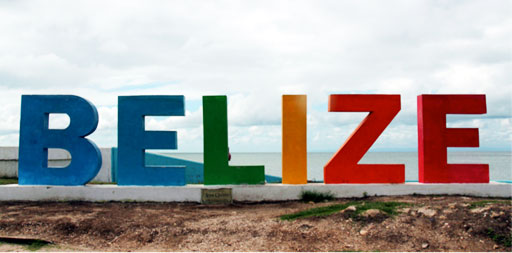
Belize has no restrictions on gambling with cryptocurrencies, which has become increasingly popular in the last few years. This site breaks down all the cryptocurrency casinos available, focusing on each one’s strengths and offerings. It will not only point you in the right direction to play with Bitcoin, but also with Ethereum, Monero, Dash, and Litecoin as well. Card games, such as poker and blackjack, dice games, and online betting can all be played with Bitcoin.
Casinos that play with cryptocurrencies usually give better bonuses. They can afford to, as they do not have the fees to pay incurred by normal bank and credit card transactions. Also, the amount you deposit is in their account instantly, so there are no waiting days for the financial institution to hand it over.

Players also have a chance of increasing their winnings. If they play with Bitcoin, for instance, and the value increases, they have won again.
Physical VS Digital
So now the options are available to play either online or in a building, which is the best? That is basically a matter of preference, but there certainly are some advantages to playing in online casinos.
To start with you are not constricted by the time you can play. Online casinos do not close, and as long as you have access to the internet you can play anytime, 24 hours a day, 7 days a week. You have a much larger choice of games, as online there are no restrictions on floor space.
Some people say that you don’t have the atmosphere of playing in a physical building if you play online. But that argument is disappearing with the advent of games that are live-streamed in real time. You can interact with the other people just like you would in a brick and mortar casino.
Really, the only disadvantage of not playing in a physical casino is the lack of free tea and coffee. Playing online you will have to go and make your own, but this is probably far outweighed by the fact you get to sit in your favorite armchair to drink it.
In Sweden, they also prefer to play online casinos on the https://utansvensklicens.
*See our Disclaimer for release information.
A new species of sharks identified as the Atlantic sixgill shark has been discovered in the Atlantic Ocean.
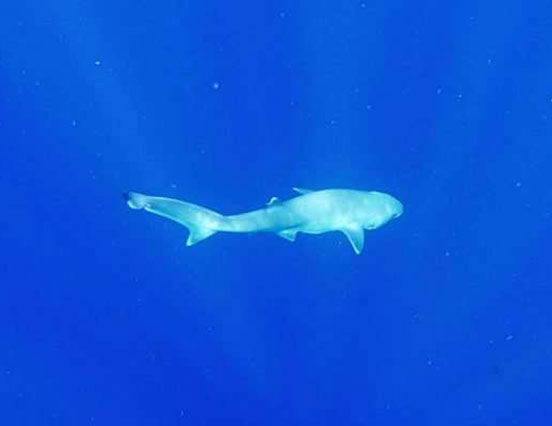
They measure up to 6 feet in length but are smaller than their Indo-Pacific relatives, which can grow to 15 feet or longer.
They are described as having a “unique, saw-like lower teeth and six gill slits” while most sharks have five gill slits.
The discovery was made by scientists at the Florida Institute of Technology, MarAlliance in Belize, Florida State University Coastal and Marine Laboratory and the National Marine Fisheries Service.
According to Phys Org. the ancestors of these sharks existed over 250 million years ago quite before dinosaurs and are among the oldest creatures on earth. They live at extreme ocean depths and so has been a challenge to study.
Belizean authorities have not yet issued a statement to commend the Belizean Nationals whose efforts added to this discovery.
Source: BreakingBelizeNews.com
Belize-born heavyweight boxer Jarrell Miller will be a step closer to a world title shot if he can get past Frenchman Johann Duhaupas when the pair meet at the Barclays Center in New York City on April 18.
Miller has a professional record of 20-0-1, with 18 of his victories coming via knockouts. The former kickboxer first put himself in world title contention when he won the interim WBA-BABA belt in 2016 following a win over Donovan Dennis.
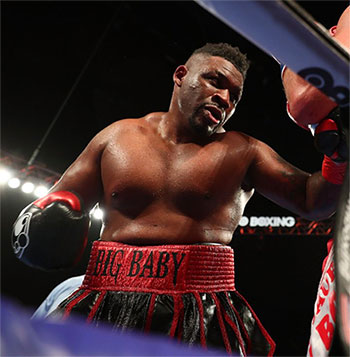
Big Baby, as he likes to be called, then claimed the WBO NABO crown after stopping American Nick Guivas in the second round of their clash at the Seneca Niagra Resort Casino in New York as once against he showed his explosive power.
Arguably Miller’s best win of his professional career so far though was his success against Gerald Washington last July. The American had just recently challenged for the WBC heavyweight title against Deontay Wilder but it was the Belize man who was dominant in the contest, eventually stopping his opponent in the eighth round.
Miller’s next challenge is against a very experienced boxer in Duhaupas. The 37-year-old has fought on 41 occasions as a professional and recently had one of his best results as he won the WBA International title. A win for the younger man may put him as the number one contender with the WBA and a world title challenge could then come as early as this summer.
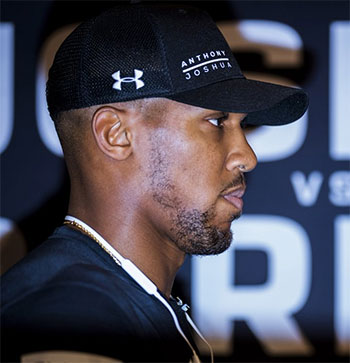
By the end of next month, there is likely to only be two world champions in the heavyweight division as WBA and IBF champion Anthony Joshua will meet the WBO titleholder Joseph Parker in a unification contest in Cardiff, Wales. Parker is an outsider here at 5/1 to come through the tie with all three belts, while Joshua is long odds-on at 1/12 to continue his dominance since turning a pro.
Meeting Joshua would be the most lucrative option for Miller as the British boxer is a huge box office draw in the UK and around the world, therefore the tie would almost certainly be on pay-per-view television. AJ has won all 20 of his contests by knockout, with his highlight so far being his victory over Wladimir Klitschko at Wembley Stadium in 2017.
The other option for Miller is to go down the WBC route where Wilder currently holds the belt. The American does have to come through a title defence against Luis Ortiz next month but he is 4/11 with the bookmakers to successfully win that clash.
Wilder has 39 victories from 39 bouts and will have his eye on the winner of the Joshua-Parker contest. If that unification tie can’t be made later this year, Miller looks his most likely challenger in the USA as he is running out of opponents this side of the Atlantic.
For now, though, the focus for Miller will be on Duhaupas as only as a victory will be good enough to keep him on track for a life-changing fight in 2018.
When you think of the reasons that draw tourists to Belize, you’re naturally likely to think straigh taway of the stunning year-round weather, the incredible Mayan ruins, and the fact that the country boasts stunning diving and fishing opportunities. However, there is one aspect that, although not so widely acknowledged at the moment, could end up becoming one of the primary reasons for tourists to visit Belize, and a big factor in helping change the perception of it as just a smaller, less busy coastal rival to the Riviera Maya and the Cancun area.
With Belize aware that it needs to retain its unspoiled “paradise location” appeal, recent moves to ban offshore oil drilling will help to ensure that the country’s reefs are left in a strong condition. The increasingly positive conditions surrounding personal safety and security have also helped to encourage expats from the USA and further afield to come to the country to retire, proving that the country is looking to appeal to those of all ages and demographics.
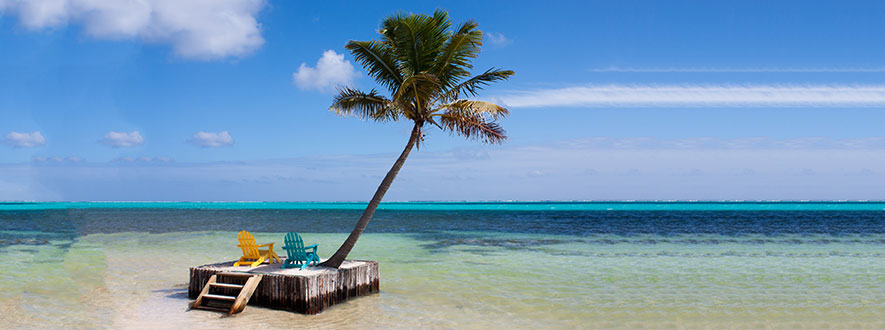
“Belize Xsi-235-Edit” by (CC BY 2.0)
One of the more impressive recent ideas, though, has been the increase in quality and quantity of new casinos, as well as places to stay that combine relaxation with the chance to win big on jackpots.
Perhaps one of the most interesting aspects of Belize’s forward-thinking approach as it tries to build a strong and sustainable tourism profile for itself is that instead of simply trying to become the latest Macau or Monte Carlo, or even trying to copy the Riviera Maya approach of beautiful beaches and big hotels, it looks to drive gambling tourism forward in a more widespread, entrenched manner in order to help benefit the whole country.
Take the popularity of online gambling as an example. Belize has been able to take advantage of the widespread popularity of online gaming, in part due to the simplicity of playing many of these games, as explained in this guide to progressive slots, by creating its own online gambling institutions with a solid reputation to help to add to the rising tide of money being generated by tourism.
An excellent example of a country where this has taken place can be found in the form of Canada, where the popularity of physical casinos in certain provinces has helped to encourage growth of online gambling in the country, with websites set up over there to help provide you with all you need to know about online slots and other casino games such as blackjack, roulette and beyond.
While the Canadian model is certainly something to aspire to, the fact is that Belize now has a fantastic chance to embrace the future and help secure itself a reputation as a place not just to visit for the beautiful scenery and incredible history but also for the vibrant gambling opportunities, both offline and online. If the country can do this, then everyone who lives in Belize could well see the benefits of an improvement in the country’s wealth.
Belize has a serious passion for sports and gaming. It may not sit at the top of any sporting world rankings, but this doesn’t detract from the importance of the sporting and gaming scene in the country. In fact, the huge range of sports that have found popularity here is in part a reflection of the many different cultures that have colonized or had significant dealings with Belize over time, with the Spanish, British, Chinese and many more nationalities having an impact on the popularity and legacy of sports in the country.

12% of the country’s ethnic population is said to be of Mayan origin, down from a reported figure of 1-2 million at the height of the Mayan Empire, but as we’ll see, many of the most popular sports and games come from outside cultural influences, complementing those games that have traditional, local origins.
Ball Games from Britain
Soccer, or football as it is known locally, has a huge following in Belize, but the country doesn’t exactly boast the brightest international ranking; we are currently ranked in 171stplace in the FIFA international rankings for the men’s team, and 119th for the women’s team. Soccer is one of the more popular sports around the entire central and South American area, but not all sports originating in the UK and spreading worldwide from there have experienced the same sort of success in Belize. One example of this is cricket.
Cricket isn’t exactly an unknown sport in Belize and the wider region. After all, there is a South American Cricket Championship, and the country has an associate status with the ICC, but the quality of many local pitches hasn’t traditionally been conducive to the sport becoming seriously ingrained in our sporting culture. However, growing recent popularity has attracted attention from some of the bigger names in the world of cricket, including a recent visit by the MCC, who of course play at the famous home of cricket, Lords, in the UK.
A Mayan Twist
Soccer as we know it may well be built around its top stars, like Lionel Messi and Cristiano Ronaldo, who earn over $50 million per year from their salaries alone, and it may be Britain’s game to boast in terms of heritage, but there is actually some suggestion that the love of soccer is at least vaguely linked to the tradition of a far more brutal Mayan ball game.
The game is arguably the oldest organized game to be documented, with suggestions that it was created over 3,500 years ago, and it wasn’t played for great salaries or even in order to win trophies and titles. Instead, it was used as a way of placating the Mayan gods and was even used as a proxy for war! Despite the fact that soccer games can get a bit heated nowadays, the Mayan game saw captives forced to play before being sacrificed and almost certainly wasn’t just used as a way of having fun. Fortunately, the game is no longer played and the element of defeat possibly leading to the loser being sacrificed hasn’t been adopted by modern soccer chiefs!
A Pirate’s Life For Me
One of the earlier colonizing influences in Belize was the arrival of pirates, who used the reefs to shelter and hide away from their enemies. Couple this with the fact that the British Navy famously won the battle of St George’s Caye, driving the Spanish away, and you can see how card games and games of chance, which have traditionally been popular with sailors, have a history in the country.
Nowadays, rum companies like to boast about their associations with pirates, but it’s games of chance that really have strong associations with pirate life historically. Indeed, in more recent times, games such as crabs have become very popular, and Belize actually operates casinos that offer one local game that is popular globally. In fact, thanks to the internet and operators like Betway, Caribbean stud poker is played online as a live casino game too. The game is similar to the poker variant known as five card stud, but the Caribbean spin means that players don’t battle each other like in most versions of poker, but face the dealer instead. That’s why it’s been easily adapted for live casino games, where players play against live dealers on livestream.
For those who want to enjoy a really traditional game of cards in Belize, though, a local variant of rummy, called pitty pat, is available. Despite often being decried as simply a local version of rummy, the game is hugely popular and shows that despite the local population clearly enjoying playing games that have come from around the globe, it certainly isn’t a place afraid to enjoy its own traditions and games.
A Dip in the Ocean
While the USA might not have been able to get a McDonalds in Belize just yet, games like softball are as popular as brands like Coca Cola and Fanta (both of which are bottled in the country) and it will be interesting to see if this trend of growing interest in American sports continues to grow.
While cricket, soccer, and softball might all be popular to varying levels in Belize, as well as poker and pitty pat, let’s not forget that watersports and diving are also huge draws. Belize has incredible waters to explore, adding to the options available for sport and gaming fanatics in the country. For anyone who has the pleasure of visiting the country, as well as anyone fortunate enough to live in Belize, it is well worth taking the opportunity to experience a rich and vibrant part of the traditions of the country in the form of its sport and gaming options.
Belize was an early adopter of e-gaming licensing and is today one of the most well-established e-gaming jurisdictions. The Computer Wagering Licensing Act (1995) was introduced in May 1996, well ahead of many other comparable jurisdictions, with the Belize Computer Wagering Licensing Board regulating all online wagering conducted by companies who are based in the country. Gambling companies licensed in Belize can provide casino games and sports betting services for players who are based outside of the country, but those resident in Belize are prohibited from gambling online.
 Belize’s position in the online gaming industry has faced a number of challenges in recent years, most notably from countries which have transitioned from so-called ‘grey’ markets to regulated or ‘white’ markets. The most significant of these is the UK, which in 2014 introduced regulated online gambling for residents, with the UK Gambling Commission assuming responsibility for the licensing of sports betting and casino sites.
Belize’s position in the online gaming industry has faced a number of challenges in recent years, most notably from countries which have transitioned from so-called ‘grey’ markets to regulated or ‘white’ markets. The most significant of these is the UK, which in 2014 introduced regulated online gambling for residents, with the UK Gambling Commission assuming responsibility for the licensing of sports betting and casino sites.
Any operator now looking to advertise or offer online gambling services to UK residents needs to be licensed by the UK Gambling Commission, with operators now having to pay a point of consumption tax on every wager. As a consequence of this, a license from Belize no longer has the appeal that it once did, not enabling operators to service players in the UK. Sites regulated by the UKGC, including some of the world’s biggest international sports betting and casino brands, now often have dual licenses, one to target the UK and the other for the rest of the world.
Another challenge faced by the Belize Computer Wagering Licensing Board is that the growth of regulated jurisdictions has meant that players are becoming more conscious of the benefits of playing and betting at sites that operate within a more tightly controlled regulatory framework. This is especially the case as these jurisdictions have become associated with the biggest and best-known gambling companies.
Although a significant number of online gambling firms have previously been licensed in Belize, the attraction of regulated markets for operators has meant that it now no longer licences any of the major international companies. This may have led to players becoming more cautious when playing at Belizean sites, as the name is not one they instantly recognize, and this player uncertainty has in turn has then led to operators seeking licensing approval from better-known regulators to counter this.
In addition, Belize also faces stiff competition in this regard from similarly small jurisdictions who have nevertheless managed to carve out for themselves strong positions in the market. Of these, Malta is the leading competitor, with the Malta Gaming Authority one of the most important gambling jurisdictions currently in operation. In part, this is because it was one of the first European jurisdictions to regulate online gambling, and also because it was on the UK Gambling Commission’s ‘white list’ which operated prior to requiring all licenses to have a UKGC license.
In addition, because so many leading international operators have licences granted in Malta, the name is synonymous in many players’ minds with well-regulated and trustworthy sites, and as such a MGA licence is considered to be an extremely valuable one.
The same is true of other smaller regulatory jurisdictions, such as Curacoa and Gibraltar. Curacoa, for instance, has a very low tax rate which makes it extremely attractive to operators, while Gibraltar, like Malta, is home to many of the world’s leading gambling firms and so is a name that players associate with the major brands and therefore a high degree of security. Alderney and the Isle of Man are other small regulatory regimes that have both prestige and brand recognition, and so provide further stiff competition to Belize.
This is not to say that the e-gaming industry is under threat of disappearing in Belize, but rather that its position is perhaps not quite as assured as it once was; however, going forward a new direction might prove to be worth exploring. While some casino and sports betting operators continue to be licensed from the country, it has proven hard to claw back the ground that places like Malta and Gibraltar have gained, and so the future of e-gaming in Belize might be set to change.
For instance, crypto betting is an area in which Belize could once again gain a foothold in the marketplace. Locally-based sports betting company XWIN CryptoBet has recently secured a Belize gaming licence which will enable it to provide online sports betting (including betting on e-sports) using blockchain technology, so that bets can be made and accounts operated in cryptocurrencies like Bitcoin and Ethereum. Another Belize company, LetBet is taking this one step further, and has created its own crypto currency that will enable its sports betting platform to operate on a peer-to-peer, decentralised basis, also using blockchain technology along with smart contracts.
Therefore, innovation and the early adoption of emerging technologies for creating new ways of betting online could be the way in which Belize re-establishes its place in the gaming industry, and becomes the means by which it attracts start-up online gambling companies to set up base in Belize City. New-found expertise and experience in this emerging sector of the online gaming industry could also mean that Belize is able secure a place for itself as a specialist licensing authority once more as well.
Now you can use the services of utländska casino med Trustly without leaving your home, everything is easy and simple.
*See our Disclaimer for release information.
On Thursday (Jan. 4), Donald Trump proposed allowing oil drilling in nearly all waters situated off of US shores. If the proposal passes, it will open up more than one billion square kilometers (about 390 million square miles) of area previously protected for environmental reasons.
The oil industry cheered the announcement, calling it “long overdue,” while environmental groups called it a “shameful giveaway” to the oil industry, as The New York Times summarized.
Among the hullabaloo, one piece of good news didn’t get the attention it deserves. On Dec. 29, the Belize government voted to implement an indefinite moratorium on all new oil exploration in its waters.
Belize produces some 3,000 barrels of oil per day, a minuscule amount compared to more than 1.5 million barrels per day that the US produces in the Gulf of Mexico alone. And, yet, Belize’s announcement is an important one.
Like most developing countries, Belize relies on its natural resources for its economy. Oil constitutes more than a quarter of its exports. And, yet, thanks to grassroots campaigns, Belizeans were convinced that protecting its coral reefs will be more important to the country, economically, in the long-term.

Environmental groups have been lobbying the Belize government for an off shore drilling ban since at least 2006, when the country’s only oil company hit new reserves. Belize is home to the longest barrier reef in the Western hemisphere, and oil drilling puts at risk all the diversity of life that the reef supports.
Tourism brings in more than $200 million to Belize, which is more than 10% of its gross domestic product, and the reefs are the country’s biggest tourist attraction. The barrier reefs support more than 190,000 livelihoods in a country with a population of 370,000.
“Belize is a small country making a mighty commitment to putting the environment first,” says Nadia Bood, a reef scientist with the World Wide Fund for Nature (WWF), an organization that campaigned for the protection of the reefs. The fund got more than 450,000 people from across the world to email the Belize government about the issue.
“Ending oil activities will encourage other countries to follow suit and take the urgent action that is needed to protect our planet’s oceans,” says Chris Gee, a campaigner at WWF. “Like the Belize Barrier Reef, nearly half of natural World Heritage sites worldwide are threatened by industrial pressures.”
Belize’s decision to choose reefs over oil is something that the world needs to do a lot more if it is serious about saving its coral. A new study(paywall) published last week shows that coral reefs are bleaching four times as frequently as they did in the 1980s. The main reason is human-induced climate change which is causing oceans to become warmer and more acidic—both act as poison for highly sensitive corals.
The more fossil fuels we dig up and burn, the more carbon dioxide we add to the atmosphere and make climate change worse.
Source: Quartz